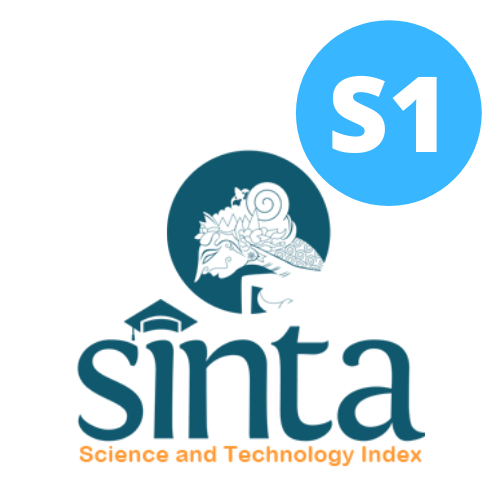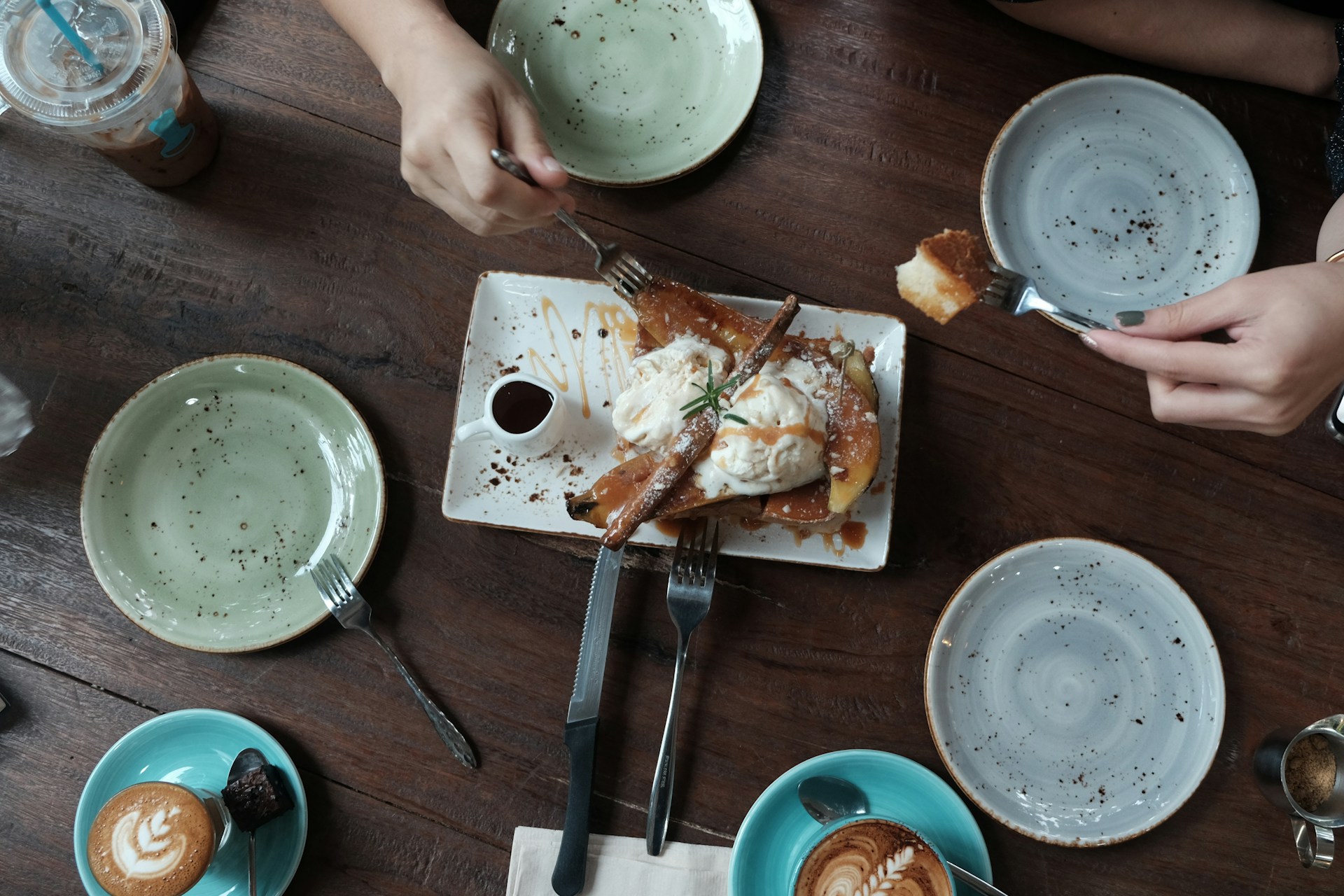Infant and Young Child Feeding Practices Based on Region of Residence in Bengkulu Province, Indonesia
Praktek Pemberian Makan Bayi dan Anak Berdasarkan Daerah Tempat Tinggal di Provinsi Bengkulu, Indonesia

Background: Children under two years old go through a rapid physical growth period, requiring the highest nutritional intake compared to other age groups. However, infant and young child feeding (IYCF) practices are often suboptimal, leading to nutritional and health problems.
Objectives: This study aimed to determine the determinants of IYCF practices in Bengkulu Province.
Methods: The study used a cross-sectional design from the 2017 IDHS data. The sample was women of childbearing age 15-49 years who had children aged 6-24 months, as many as 73 children with a stratified two-stage sampling technique. Data analysis using proportion difference test with chi-square test and multivariate binary logistic regression.
Results: This study found that in 83.9% of urban areas and 91.5% of rural areas, the practice of IYCF is not by the recommendations. There is no difference in IYCF practice between urban and rural areas. Factors related to the practice of IYCF are pregnancy planning and antenatal care (ANC) quantity. Unplanned pregnancies had a risk of 4.8 times (p-value=0.04) the practice of IYCF was not as recommended compared to the intended pregnancies. The quantity of antenatal care that was not at risk was 4.8 times the practice of IYCF was not as recommended compared to the quantity of good ANC (p-value=0.05).
Conclusions: Pregnancy planning needs to be educational material for young women, and an increase in efforts to increase knowledge of pregnant women about IYCF during antenatal care through nutrition counseling programs or classes for pregnant women in health facilities.
Sari, F. & Ernawati, E. The Relationship of Mothers’ Attitudes about Feeding Infants and Children (IPM) with the Nutritional Status of Babies Under Two Years Old (Baduta). Journal of health. 5, 77–80 (2016). https://doi.org/10.30590/vol5-no2-p77-80
Martorell, R. Improved nutrition in the first 1000 days and adult human capital and health. American Journal of Human Biology. 29, 1–24 (2017). https://doi:10.1002/ajhb.22952
Ningsih, S., Kristiawati & Krisnana, I. Hubungan Perilaku Ibu dengan Status Gizi Kurang Anak Usia Toddler. Jurnal Pediomaternal 3, 58–65 (2015). file:///C:/Users/demsa/Downloads/admin,+7%20(1).pdf
Waladow, G. et al. Hubungan Pola Makan dengan Status Gizi pada Anak Usia 3-5 Tahun di Wilayah Kerja Puskesmas Tompaso Kecamatan Tompaso. ejournal keperawatan (e-Kp) 1, 1–6 (2013). https://doi.org/10.35790/jkp.v1i1.2184
Kemenkes RI. Laporan Nasional Riset Kesehatan dasar 2018. Badan Penelitian dan Pengembangan Kesehatan (2018).
WHO. Complementary Feeding. Geneva. (2017)
WHO. Infant and young child feeding. Geneva. (2021).
Sunarsih, T., Nugrahawati, A., Shanti, E. F. A., Sari, N. A. W. & Sukmawardani, P. U. Buku Pintar Pemberian Makanan Bayi dan Anak. (PT Remaja Rosdakarya, 2019).
WHO, USAID & UNICEF. Indicators for assessing infant and young child feeding practices Part 3 Country Profiles. (2010).
Powell, F. C., Farrow, C. V & Meyer, C. Food avoidance in children: the influence of maternal feeding practices and behaviours. Food Avoidance Eating Behaviors in chindren. Appetite. 57, 683-692 (2011). https://doi.org/10.1016/j.appet.2011.08.011
Word Health Organization. Global Nutrition Targets 2025: Anemia Policy Brief. Geneva. (2014).
Stewart, C. P., Iannotti, L., Dewey, K. G., Michaelsen, K. F. & Onyango, A. W. Contextualising complementary feeding in a broader framework for stunting prevention. Matern. Child Nutr. 9, 27–45 (2013). https://doi.org/10.1111/mcn.12088
BPS, BKKBN & Kemenkes RI. Indonesia Demographic and Health Survey 2017. Central Bureau of Statistics https://dhsprogram.com/pubs/pdf/FR342/FR342.pdf (2018).
Hendrawati, S., Rakhmawati, W. & Adistie, F. Feeding Practices pada Anak Usia 0-24 Bulan sebagai Upaya Pencegahan Stunting. J. Keperawatan 13, 151–166 (2021). https://doi.org/10.32583/keperawatan.v13i1.1403
WHO. Prevalence of stunting. Geneva. (2019).
Campbell, R. K. et al. Infant and young child feeding practices and nutritional status in Bhutan. Matern. Child Nutr. 14, 1–6 (2017). https://doi.org/10.1111/mcn.12762
Humphrey, J. H. et al. The sanitation hygiene infant nutrition efficacy (SHINE) Trial: Rationale, design, and methods. Clin. Infect. Dis. 7, 132–147 (2019). https://doi.org/10.1093/cid/civ844
Lassi, Z. S. et al. Impact of infant and young child feeding (Iycf) nutrition interventions on breastfeeding practices, growth and mortality in low-and middle-income countries: Systematic review. Nutrients vol. 12 at (2020).https://doi.org/10.3390/nu12030722
Hanani, Z. & Susilo, R. Hubungan Praktik Pemberian Makan dan Konsumsi Pangan Keluarga dengan Kejadian Stunting Balita di Wilayah Kerja Puskesmas Kalibagor. J. Kesehat. 13, 172–182 (2020). https://doi.org/10.23917/jk.v13i2.11734
Zogara, A. U. & Pantaleon, M. G. Faktor-faktor yang Berhubungan dengan Kejadian Stunting pada Balita. J. Ilmu Kesehat. Masy. 9, 85–92 (2020). https://doi.org/10.33221/jikm.v9i02.505
Margiana, W., Riani, E. N. & Syamrotul, I. Hubungan Keragaman Pangan dengan Kejadian Stunting. Jurnal Kebidanan Harapan Ibu Pekalongan. 8, 14-17. https://akbidhipekalongan.ac.id/e-journal/index.php/jurbidhip/article/view/116/122
Prastia, T. N. & Listyandini, R. Keragaman Pangan berhubungan dengan Stunting pada Anak Usia 6-24 Bulan. Hear. J. Kesehat. Masy. 8, 33–40 (2020). https://doi.org/10.32832/hearty.v8i1.3631
Wantina, M., Sri Rahayu, L. & Yuliana, I. Keragaman Konsumsi Pangan Sebagai Faktor Risiko Stunting pada Balita Usia 6-24 Bulan. ARGIPA (Arsip Gizi dan Pangan). 2, 89–96 (2017). https://journal.uhamka.ac.id/index.php/argipa
Damayanti, R. A., Muniroh, L. & Farapti, F. Perbedaan Tingkat Kecukupan Zat Gizi Dan Riwayat Pemberian Asi Eksklusif Pada Balita Stunting Dan Non Stunting. Media Gizi Indonesia. 11, 61–69 (2016). https://doi.org10.20473/mgi.v11i1.61-69
Khoiriyah, IH., Pertiwi, FD. & Prastia, TN. Faktor-Faktor Yang Berhubungan Dengan Kejadian Stunting Pada Balita Usia 24-59 Bulan Di Desa Bantargadung Kabupaten Sukabumi Tahun 2019. Promoto.r 4, 145 (2021). https://doi.org/10.32832/pro.v4i2.5581
Anggryni, M. et al. Faktor Pemberian Nutrisi Masa Golden Age dengan Kejadian Stunting pada Balita di Negara Berkembang. J. Obs. J. Pendidik. Anak Usia Dini 5, 1764–1776 (2021). https://doi.org/10.31004/obsesi.v5i2.967
Subarkah, T., Nursalam & Rachmawati, P. D. Pola Pemberian Makan terhadap Peningkatan Status Gizi pada Anak Usia 1-3 tahun. Indonesian Nursing Journal of Education and Clinic. 1, 146–154 (2016). https://doi.org/10.24990/injec.v1i2.120
Niga, D. M. & Purnomo, W. Stunting pada Anak Usia 1-2 Tahun di Wilayah Kerja Puskesmas Oebobo Kota Kupang. J. Wiyata 3, 151–155 (2016). https://dx.doi.org/10.56710/wiyata.v3i2.85
Perdani, Z. P., Hasan, R. & Nurhasanah, N. Hubungan Praktik Pemberian Makan Dengan Status Gizi Anak Usia 3-5 Tahun Di Pos Gizi Desa Tegal Kunir Lor Mauk. J. JKFT 1, 17–29 (2017). https://doi.org/10.31000/jkft.v2i2.59
Hanim, B. Faktor Yang Memengaruhi Status Gizi Balita Di Wilayah Kerja Puskesmas Sidomulyo Kota Pekanbaru. JOMIS (Journal Midwifery Sci. 4, 15–24 (2020). https://ddoi.org/10.36341/jomis.v4i1.1118
Dhami, M. V., Ogbo, F. A., Osuagwu, U. L. & Agho, K. E. Prevalence and factors associated with complementary feeding practices among children aged 6-23 months in India: A regional analysis. BMC Public Health 19, 1–16 (2019). https://doi.org/10.1186/s12889-019-7360-6
Beyene, M., Worku, A. G. & Wassie, M. M. Dietary diversity, meal frequency and associated factors among infant and young children in Northwest Ethiopia: A cross-sectional study. BMC Public Health 15, (2015). https://doi.org/10.1186/s12889-015-2333-x
Aemro, M., Mesele, M., Birhanu, Z. & Atenafu, A. Dietary Diversity and Meal Frequency Practices among Infant and Young Children Aged 6–23 Months in Ethiopia: A Secondary Analysis of Ethiopian Demographic and Health Survey 2011. Journal of Nutrition and Metabolism. 2013, 1–8 (2013). http://dx.doi.org/10.1155/2013/782931
Tadesse, A. Predictors of infant and young feeding practices among children 6-23 months old in Bennatsemayworeda, Ethiopia. International Journal of Nutritional Disorders & Therapy Research. 8, 7–16 (2018). https://www.sciresliterature.org/NutritionalDisorders/IJNDT-ID15.pdf
Karnila, A. & Bantas, K. The Association between Residence and Exclusive Breastfeeding Practice among Infant 0-5 Months in Indonesia (Indonesian Demographic Health Survey Data Analysis) in 2017. Jurnal Epidemiologi Kesehatan Indonesia. 3, 49–54 (2019). https://doi.org/10.7454/epidkes.v3i2.3176
Temesgen, H., Yeneabat, T. & Teshome, M. Dietary diversity and associated factors among children aged 6-23 months in Sinan Woreda, Northwest Ethiopia: A cross-sectional study. BMC Nutrition. 4, 1–8 (2018). https://doi.org/10.1186/s13052-018-0567-9
Subedi, N., Paudel, S. & Kumar Poudyal, A. Infant and Young Child feeding practices in Chepang Communities MCH project View project Physical Activity Report Card Development, Nepal View project Infant and Young Child Feeding Practices in Chepang Communities. Journal of Nepal Health Research Council 10, 141–146 (2012). https://hdl.handle.net/20.500.14356/1926
Amugsi, D. A., Mittelmark, M. B. & Oduro, A. Association between maternal and child dietary diversity: An analysis of the Ghana Demographic and Health Survey. PLoS ONE. 10, 1–12. (2015). https://doi.org/10.1371/journal.pone.0136748
Utami, N. H. & Mubasyiroh, R. Keragaman Makanan dan Hubungannya dengan Status Gizi Balita: Analisis Survei Konsumsi Makanan Individu (SKMI). Gizi Indonesia. 43, 37–48 (2020). https://doi.org/10.36457/gizindo.v%vi%i.467
Ochola, S. & Masibo, P. K. Dietary intake of schoolchildren and adolescents in developing countries. Annals of nutrition & metabolism. 64, 24–40 (2014). https://doi.org/10.1159/000365125
Widyaningsih, N. N., Kusnandar, K. & Anantanyu, S. Keragaman pangan, pola asuh makan dan kejadian stunting pada balita usia 24-59 bulan. Jurnal Gizi Indonesia. (The Indonesian Journal Nutrition). 7, 22–29 (2018). https://doi.org/10.14710/jgi.7.1.22-29
Nugroho, M. R., Sasongko, R. N. & Kristiawan, M. Faktor-faktor yang Mempengaruhi Kejadian Stunting pada Anak Usia Dini di Indonesia. J. Obs. J. Pendidik. Anak Usia Dini 5, 2269–2276 (2021). https://doi.org/10.31004/obsesi.v5i2.1169
Nawati, N. & Nurhayati, F. Dampak Kehamilan Tidak Diinginkan terhadap Perawatan Kehamilan dan Bayi (Studi Fenomenologi) di Kota Bogor. J. Kesehat. 9, 21–25 (2018). https://doi.org/10.26630/jk.v9i1.729
Dumilah, R. Umur, interval kehamilan, kehamilan yang diinginkan dan perilaku pemeriksaan kehamilan. J. Penelit. Kesehat. Suara Forikes 10, 73–79 (2019). http://dx.doi.org/10.33846/sf10201
Dini, L. I., Riono, P. & Sulistiyowati, N. Pengaruh Status Kehamilan Tidak Diinginkan Terhadap Perilaku Ibu Selama Kehamilan Dan Setelah Kelahiran Di Indonesia (Analisis Data SDKI 2012). J. Kesehat. Reproduksi 7, 119–133 (2016). https://doi.org/10.22435/kespro.v7i2.5226.119-133
Tariku, A. et al. Mothers’ education and ANC visit improved exclusive breastfeeding in Dabat health and Demographic surveillance system site, northwest Ethiopia. PLoS One 12, 1–13 (2017). https://doi.org/10.1371/ journal.pone.0179056
Keya, T., Fernandez, K., Kharkwal, K. & Habib, N. Impact of antenatal care on pregnancy outcomes: A cross-sectional study in a rural community in Malaysia. Med. J. Dr. D.Y. Patil Vidyapeeth 14, 172–179 (2021). https://doi.org/10.4103/mjdrdypu.mjdrdypu_14_20
Kumar, G. et al. Utilisation, equity and determinants of full antenatal care in India: analysis from the National Family Health Survey 4. BMC Pregnancy Childbirth 19, 2–9 (2019). https://doi.org/10.1186/s12884-019-2473-6
Kuuire, V. Z. et al. Timing and utilisation of antenatal care service in Nigeria and Malawi. Global Public Health 12, 711–727 (2017). https://doi.org/10.1080/17441692.2017.1316413
Lumempouw, V. J. R., Kundre, R. M. & Bataha, Y. Hubungan Faktor Sosial Ekonomi Ibu Hamil dengan Keteraturan Pemeriksaan Antental Care (ANC) di Puskesmas Ranotana Weru Kecamatan Wanea Kota Manado. e-journal Keperawatan (e-Kp) 4, 1–7 (2016). https://doi.org/10.35790/jkp.v4i2.14075
Fatkhiyah, N. & Izzatul, A. Keteraturan Kunjungan Antenatal Care di Wilayah Kerja Puskesmas Slawi Kabupaten Tegal. Indones. Jurnal Kebidanan 3, 18–23 (2019). https://doi.org/10.26751/ijb.v3i1.725
Eppang, Y. Pengaruh Konseling Saat Antenatal Care (ANC) Terhadap Pengetahuan Dan Sikap Ibu Hamil Tentang Tanda-Tanda Bahaya Kehamilan Di Wilayah Kerja Puskesmas Kapasa. Jurnal Keperawatan Muhammadiyah 5, 254–264 (2020). https://doi.org/10.30651/jkm.v5i2.6331
Copyright (c) 2025 Amerta Nutrition

This work is licensed under a Creative Commons Attribution-ShareAlike 4.0 International License.
AMERTA NUTR by Unair is licensed under a Creative Commons Attribution-ShareAlike 4.0 International License.
1. The journal allows the author to hold the copyright of the article without restrictions.
2. The journal allows the author(s) to retain publishing rights without restrictions
3. The legal formal aspect of journal publication accessibility refers to Creative Commons Attribution Share-Alike (CC BY-SA).
4. The Creative Commons Attribution Share-Alike (CC BY-SA) license allows re-distribution and re-use of a licensed work on the conditions that the creator is appropriately credited and that any derivative work is made available under "the same, similar or a compatible license”. Other than the conditions mentioned above, the editorial board is not responsible for copyright violation.












































